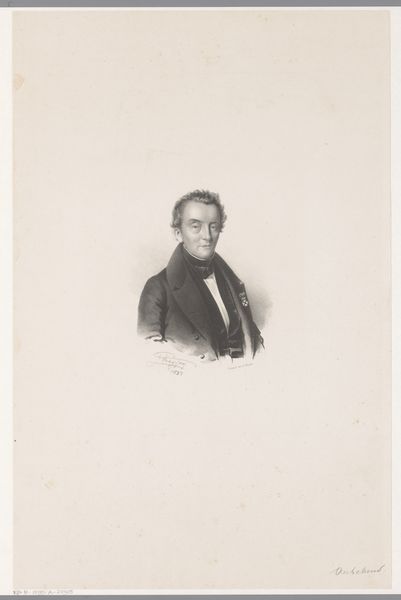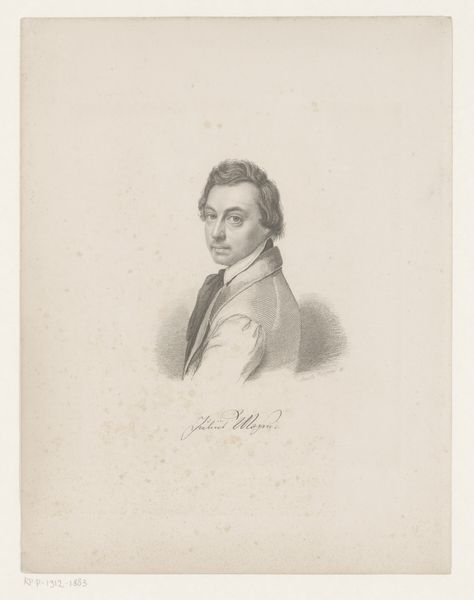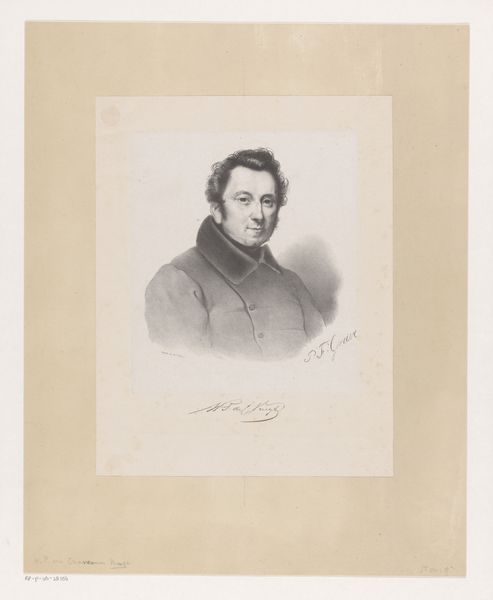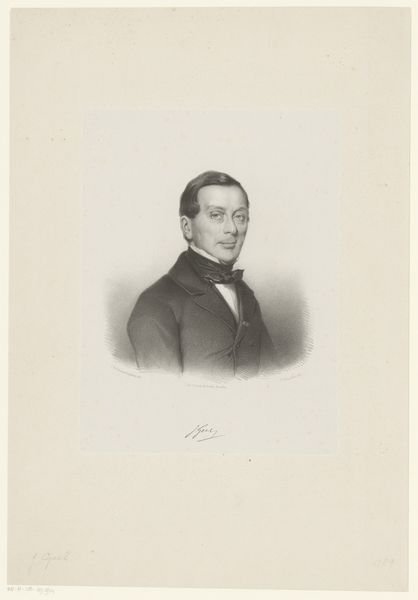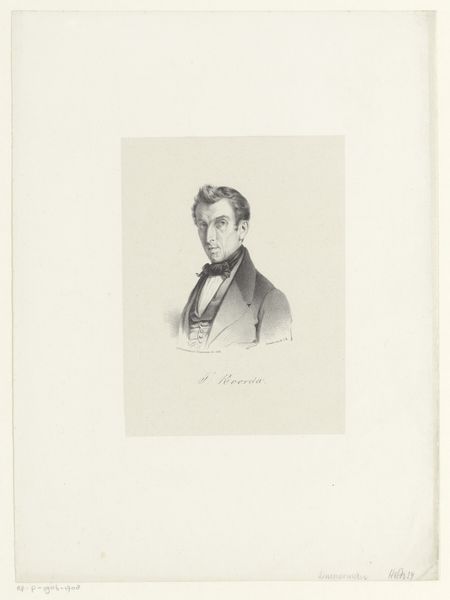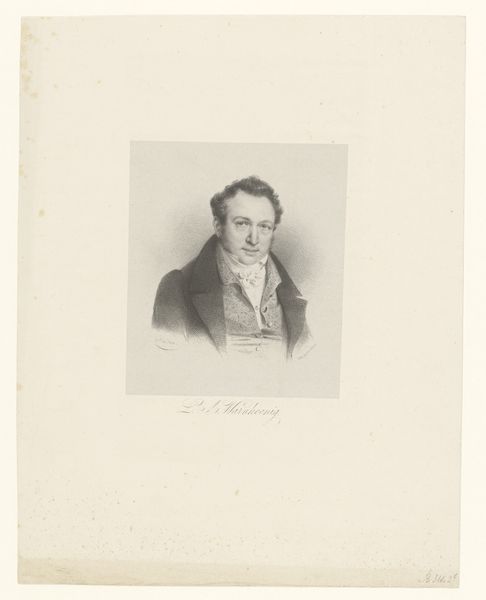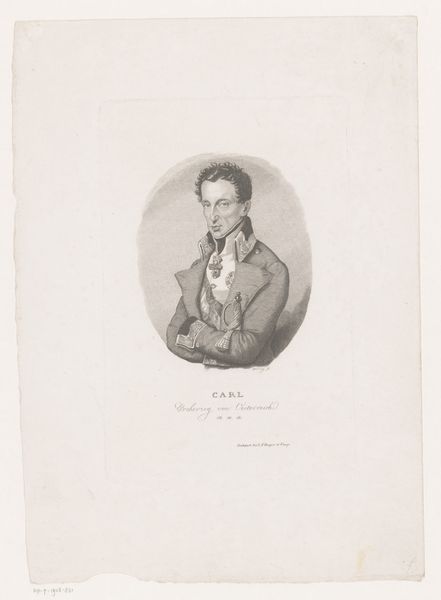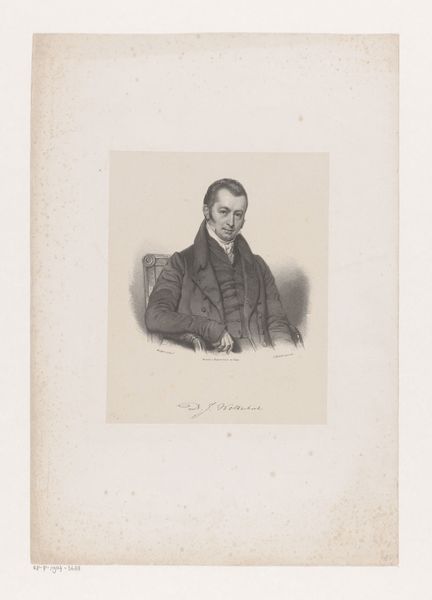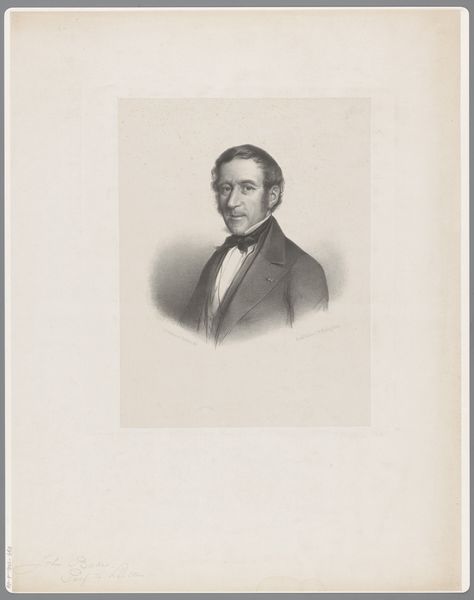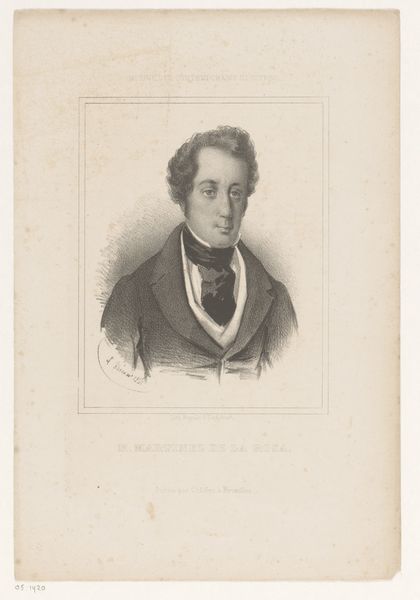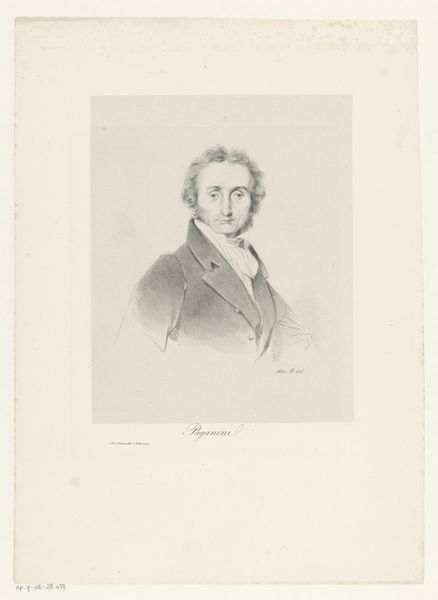
print, engraving
#
portrait
# print
#
pencil drawing
#
history-painting
#
engraving
#
realism
Dimensions: height 475 mm, width 311 mm
Copyright: Rijks Museum: Open Domain
Johan Hendrik Hoffmeister created this portrait of an unknown man, possibly Aeneas Mackay, using graphite on paper. This portrait provides insight into the social conventions of 19th-century Netherlands. Hoffmeister's meticulous rendering of the man's attire signifies his social standing. The sitter's refined clothing suggests a member of the middle or upper class, reflecting the era's emphasis on visible markers of status. This work was likely commissioned, reflecting the increasing accessibility of portraiture to a broader segment of society. Portraits such as this served to solidify social identity and perpetuate certain ideals of masculinity, linking individual identity to the social and economic structures of the time. Historical societies, genealogical databases, and archives of 19th-century Dutch portraits are all valuable resources when trying to uncover the sitter's identity. The act of historical interpretation reveals how deeply art is interwoven with social and institutional context.
Comments
No comments
Be the first to comment and join the conversation on the ultimate creative platform.
